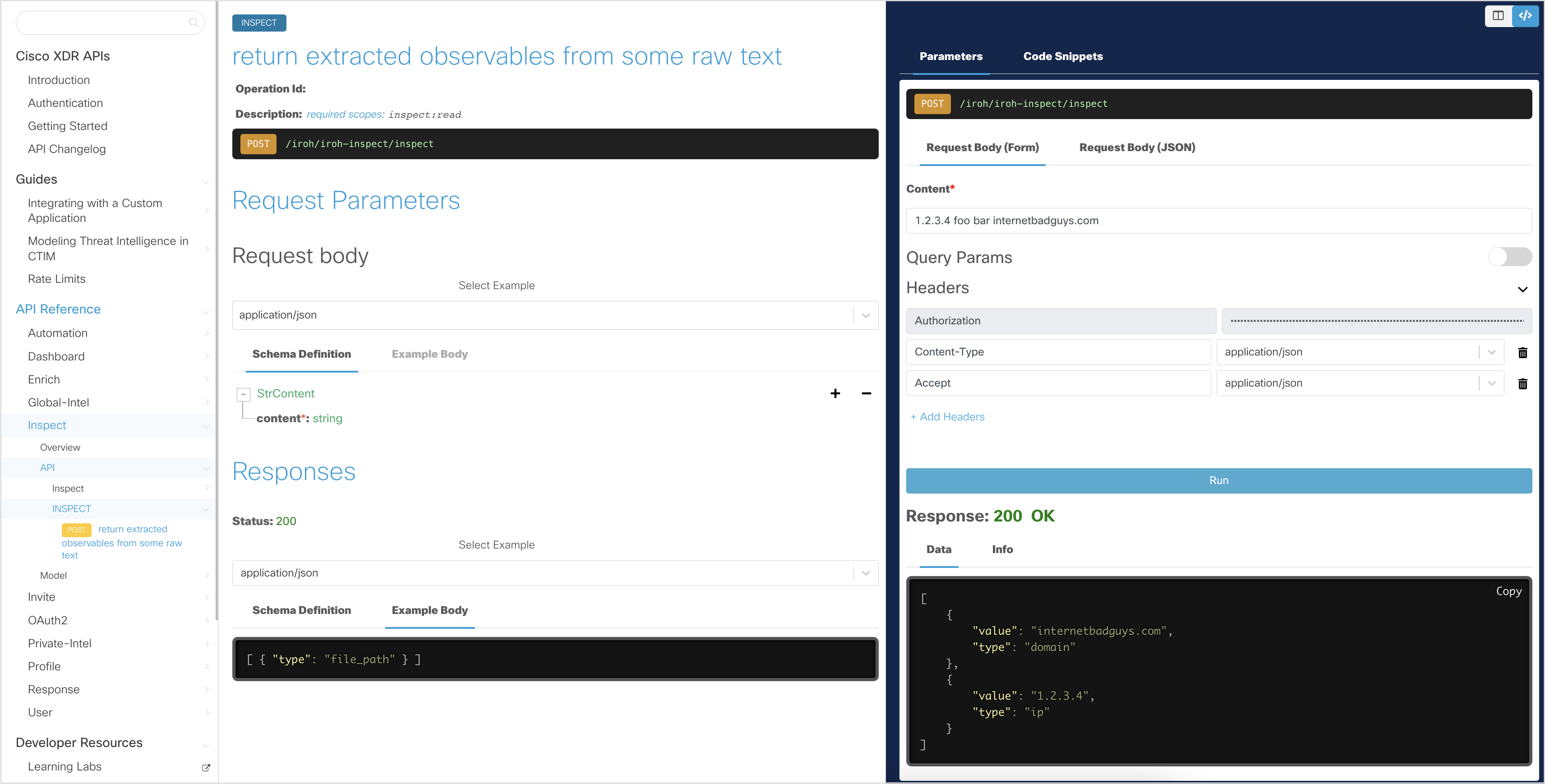Private-Intel API Docs
The Private-Intel API allows developers access to a private instance of the Cisco Threat Intelligence API (CTIA), which an organization can use to store and share data, including ongoing investigations and threat intelligence.
Note: In Cisco XDR, some Private Intelligence functions (e.g. creating and managing of CTIM objects like Judgements and Indicators) are controlled by the legacy
CTIA/Private-Intel API.
Note: In Cisco XDR, performing Incident searching and Investigations are performed by the newer
Incidents and Investigations API. The creation of Incidents in Cisco XDR is done with theIROH/Private-Intel API.
Use Cases
- Sharing actionable threat intel.
- Simple and pragmatic data model.
- Ease of integration and exploration.
- Extremely fast verdict lookups.
- Hypertextual integration with other services.
How to use the API Docs
Use the interactive documentation to explore the Private-Intel API endpoints. Each request will have a complete description of all the required parameters and it also allows you to instantly try it out in the online console. Code templates are also provided for you to quickly build scripts.
In the interactive explorer, the Client ID and Client Secret has been pre-filled and will allow you to make read-only API requests. These credentials will allow you to get an Access Token, which will be stored for subsequent API requests and regenerated when it expires.

Note: The interactive documentation uses read-only credentials and the try it out feature will only work with
GETand selectedPOSTrequests.To try other
Private-IntelAPI requests, go to https://private.intel.amp.cisco.com/index.html
Generate an Access Token
In the interactive API explorer, the Access Token is automatically generated using the pre-filled Client ID and Client Secret so you do not need to generate it yourself.
If you want to understand how the Access Token is generated from the Client ID and Client Secret credentials, take a look at the Authentication page.
For detailed instructions on how to use the interactive API documentation (or your own Python script), see the Getting Started page.
Download the Private-Intel OpenAPI Specification
Download the Private-Intel OpenAPI specification (OAS) file here.
Sample Code
Below is an example of how to use the Private-Intel API, without the Python SDK. In this example we create a custom Judgement for an observable. During investigations and enrichment, this custom Judgement will be shown. Please check the Getting Started for instructions using the SDK.
import json
import requests
# create headers for API request (See the OAuth2 overview page for sample code to generate an access token)
access_token = 'eyJhbGciO....bPito5n5Q' # truncated example, generate JWT token separately
bearer_token = 'Bearer ' + access_token
# creates a judgement for an observable
url = 'https://private.intel.amp.cisco.com/ctia/judgement'
headers = {
'Authorization': bearer_token,
'Content-Type':'application/json',
'Accept':'application/json'
}
payload = {
'observable': {
'value': 'internetbadguys.com',
'type': 'domain',
},
'type': 'judgement',
'source': 'my-feed',
'priority': 95,
'severity': 'High',
'timestamp': '2023-07-12T11:26:02.648Z',
'confidence': 'Medium'
}
response = requests.post(url, headers=headers, data=json.dumps(payload))
print(response.text)
if response.status_code == 201:
# convert the response to a dict object
response_json = json.loads(response.text)
# get the judgement (remainder values are accessed in the same way)
id = response_json['id']
severity = response_json['severity']
priority = response_json['priority']Contact: Cisco Security Business Group -- Advanced Threat
License: All Rights Reserved